One of the more difficult things to stockpile is any sort of fuel. That’s primarily because by definition anything we use as a fuel, is flammable. Therefore, there is always risk in storing it; a risk that is directly proportional to how flammable the fuel itself is. On top of that issue, not all fuels store well, losing their potency over time.
Nevertheless, people have stored some fuels for centuries and even the fossil fuels we are so dependent on for more than 100 years. So it is clear that we can store fuel; we just need to figure out how to store it safely.
Part of that is knowing where to store it; part is coming up with the right containers; and part is doing whatever else is necessary to keep that particular fuel in a usable condition. This obviously varies from one fuel to the next.
As preppers, the two fuels we are most interested in are wood and gasoline. But those aren’t the only fuels we might find ourselves using. Other petroleum-based fuels, like kerosene and lamp oil are extremely useful too, especially in a post-disaster scenario where the electrical grid is down.
While it might prove to be impossible to store enough fuel to see us through the next decade, it is clearly possible to store enough to help us through a post-disaster time, especially if we use it sparingly. The right precautions and the right preparation are all it takes.
Related: Best Fuels For Off-Grid Survival
Wood
Of the various fuels we’re talking about, wood is probably the safest to store, as it is considerably less volatile than gasoline. We can stockpile wood and keep it for years, without anything serious happening to it. But we still need to take precautions.
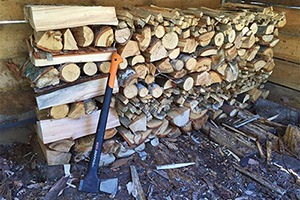 The first thing is that we don’t want to store that wood up against our homes. While people have built woodpiles up next to their homes, where the eaves could help keep moisture off the wood, it creates a fire hazard. It also provides termites a clear path into the home, where they can do structural damage. The risk just isn’t worth it.
The first thing is that we don’t want to store that wood up against our homes. While people have built woodpiles up next to their homes, where the eaves could help keep moisture off the wood, it creates a fire hazard. It also provides termites a clear path into the home, where they can do structural damage. The risk just isn’t worth it.
Yet that wood needs some sort of protection from the rain, otherwise, every time it rains, the exposed end grain of the wood will soak up water. That will make it extremely hard to use the wood for the fire. So, you should either keep the wood in a shed or rig a tarp over it, to protect it from the rain.
However, that wood pile should be kept off the ground, so as to keep termites and other insects from getting into it.
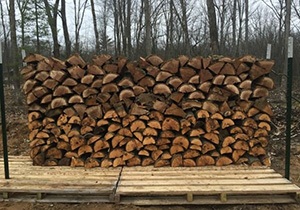
That can be accomplished by creating an area of sand and putting the wood pile on it or by using pressure-treated wood to build a wood rack. Termites won’t eat pressure-treated wood, so a wood rack made of it is an effective barrier against termites.
Related: How to Store and Stack Firewood The Right Way
Gasoline
Gasoline is the hardest fuel to store for a prolonged period of time. It’s highly volatile, so it ignites easily. But the volatility causes another problem, as the components of the gasoline which evaporate first are the most flammable ones. This is why people say that gasoline can’t be stored for more than six months, unless a fuel-stabilizer is used. Even then, the stabilizer makes it only good for about 12 months.
But the US military shipped gasoline to forces in the field, in five-gallon cans and 55-gallon drums, throughout the Second World War and the Korean War. How could they do what people today say can’t be done?
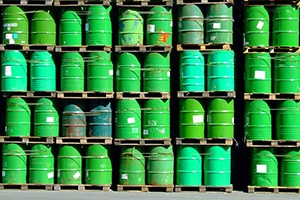
First of all, the military only shipped gasoline in sealed metal cans; not in plastic gas cans. Not even in Jerry cans, which have a rubber gasket seal.
The seal used was a metal one, which was impermeable to the gasoline vapors, even in a hot climate.
The same thing will work for us, if we store gasoline in sealed 55 gallon drums or metal cans with a metal seal.
This shouldn’t be done in the home or even up close to the home, due to the flammability of the gasoline. Fortunately, the auto-ignition temperature of gasoline is 536-853°F. So it’s not going to simply light itself on fire, if we leave a drum sitting outside on a hot day.
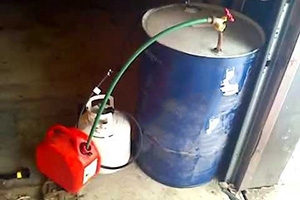 I have kept a 55-gallon drum of gasoline in my garden shed for years. The shed sits in the shade of a large tree. Even though I live in a hot climate, it never seems to get above 120°F in there, no matter how hot it is outside. The steel drum is laying on its side, on a stand, with a brass spigot installed in the smaller bung hole.
I have kept a 55-gallon drum of gasoline in my garden shed for years. The shed sits in the shade of a large tree. Even though I live in a hot climate, it never seems to get above 120°F in there, no matter how hot it is outside. The steel drum is laying on its side, on a stand, with a brass spigot installed in the smaller bung hole.
The larger bung hole is up, allowing me to use it to fill the drum. Since the drum is sealed, the flammable elements don’t easily evaporate.
Related: 7 Survival Uses for Expired Gas
Nevertheless, in order to keep that gasoline fresh, I rotate my stock. As part of that, I regularly use the gas to power my lawnmower, rototiller, chain saw and a generator I use. I also pull a can or two a month out and put it in my car. Then I go to the gas station and buy gas to fill the drum back up, always maintaining it full.
Being full also helps reduce the amount of evaporation. In this way, I’m always sure that the gasoline I’m storing in that drum is good gasoline.
If you don’t have a shed to store your gas drum in, I’d recommend at least keeping it in the shade. You also want to keep it hidden from view, as neighbors might see that as a cheap way to fill their tank.
Never try storing gasoline for more than a day or two in plastic gas cans. While they are safe for transporting gas, the gas and vapors inside will expand on a hot day, putting a strain on the plastic. Eventually it will start to leak. Since plastics are petroleum products, the gasoline can soak into the plastic as well, evaporating slowly through it.
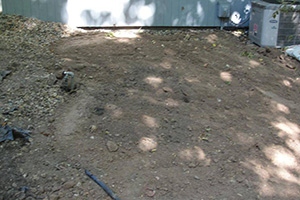 Another option is to bury a drum in the ground, with the head of the drum at ground level. This will work to keep the fuel cool, while also keeping it out of sight.
Another option is to bury a drum in the ground, with the head of the drum at ground level. This will work to keep the fuel cool, while also keeping it out of sight.
However, there is a very real danger that the barrel will rust through, spilling the gas and allowing water into it.
So, if you’re going to do this, first cover the barrel with several heavy coats of paint. Even then, I’d recommend replacing it every couple of years.
Related: The First Thing You Need To Do When The Gas Price Rises Above $5 Per Gallon
Other Petroleum Products
Kerosene and lamp oil are useful in a survival situation as well. Like gasoline, you’re best storing them in metal containers, even though they both come in plastic ones. Neither evaporates as readily as gasoline, and lamp oil evaporates slower than kerosene does. Nevertheless, both can evaporate, especially when stored for a prolonged period of time.
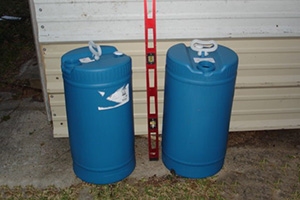 If you’re planning on using kerosene for heating, you’ll need a lot of it, so 55 gallon metal drums make sense for storing it as well. You can store it with the drums vertically or horizontally, just like gasoline.
If you’re planning on using kerosene for heating, you’ll need a lot of it, so 55 gallon metal drums make sense for storing it as well. You can store it with the drums vertically or horizontally, just like gasoline.
But like gasoline, I’d recommend keeping it in a hidden place to keep it from being stolen.
Someone might even think it’s gasoline and try running it in their car, which would be tragic for them, and tragic for you, as you’d lose however much kerosene they took.
Another way of storing these flammable liquid fuels is in a flammable materials cabinet. These are required in industry, although you don’t have to have one at home. Besides being painted yellow, flammable materials cabinet is metal and has a door that closes automatically, whenever it isn’t being held open. The combination keeps sparks from getting to the flammable liquids inside.
A fair approximation of a flammable materials cabinet can be improvised by using a truck toolbox.
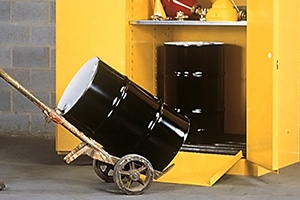
I have a small one in my workshop, that used to be mounted in the back of a truck I had. It’s not a full-width box, but rather, one that bolted to the floor.
It will hold about six one-gallon containers, and has a lid that I’ve modified so that it will fall shut, whenever I let go.
That way, when I take something out, it closes automatically.
While I don’t use it for lamp oil, kerosene or gasoline, but rather flammable solvents. It’s an effective flammable materials cabinet. I weld and grind in that workshop too and the toolbox keeps the sparks away from those solvents (that’s why they are in there).
Related: How To Make Survival Lamps With Used Cooking Oil and Mason Jars
Vigilance Is Important
Regardless of how you store any fuel, don’t just leave it and ignore it.
It’s necessary to inspect your fuel stocks on a regular basis. Try looking for any signs of deterioration of either the fuel itself or what’s protecting it. Most problems with fuel can be recognized early, before anything serious goes wrong.

No comments:
Post a Comment